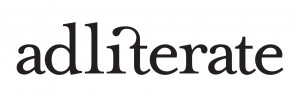I am a big fan of the Cadbury’s gorilla ad and fully expect to see some stonking sales results coming in thick and fast.
In the final instance I just think somethimes you need a bit of this – good old fashioned salience delivered by a fame seeking commercial.
For all the analysis, particularly online, I had overlooked they way it was perfectly built to be remixed – or simply have a new track laid over it.
So here are a few of the best remixes I could find on you tube. My personal favourite is of course Total Eclispe of the Heart.






